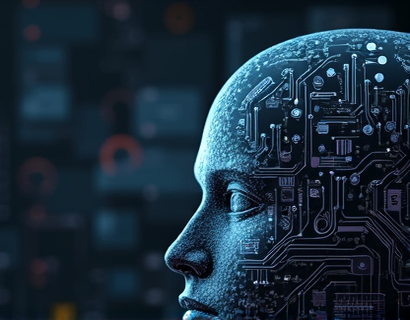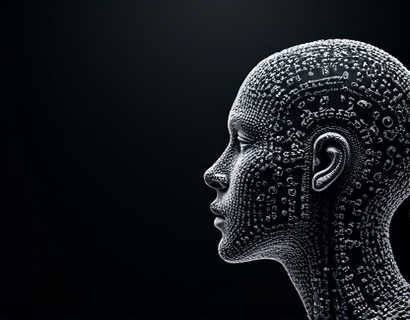AI-Powered Chat Interface: A Safe and Educational Resource for Accessing Specialized Social Services Information
In the digital age, accessing information has become more convenient than ever, thanks to advancements in artificial intelligence and chat technology. An AI-powered chat interface has emerged as a revolutionary tool, particularly for individuals seeking specialized information on social services. This platform is designed to deliver verified and educational content, ensuring a safe and informative experience for a diverse audience, including adults, students, and young learners. The primary goal is to simplify access to specialized social services information, empowering users to make informed decisions and engage effectively with essential resources.
The need for such a platform is evident in the complex and often overwhelming nature of social services. Whether it's navigating healthcare benefits, understanding legal rights, or finding educational support, the process can be daunting. Traditional methods of accessing this information, such as visiting government websites or contacting organizations directly, can be time-consuming and may not always provide the clarity needed. An AI-powered chat interface addresses these challenges by offering a user-friendly, instant, and accurate source of information.
The AI chat platform operates on a robust knowledge base that is continuously updated and verified by experts in the field of social services. This ensures that the information provided is not only current but also reliable. The chat interface uses natural language processing to understand user queries and provide relevant responses. This technology allows users to interact with the platform in a conversational manner, making the experience more approachable and less intimidating.
One of the key features of this AI-powered chat interface is its ability to cater to a wide range of users, from adults seeking detailed information to students and young learners who require simplified explanations. The platform is designed with a child-friendly version, ensuring that younger users can access the information safely and understandably. This multi-generational approach is crucial in a society where different age groups have varying levels of digital literacy and information needs.
The verification process of the content is a critical aspect of the platform's design. Each piece of information is cross-referenced with credible sources, including government databases, academic research, and reputable non-profit organizations. This multi-layered verification ensures that users receive accurate and trustworthy data. The platform also includes a feedback mechanism, allowing users to report any inaccuracies or outdated information, which helps maintain the high quality of the content.
For adults, the platform provides comprehensive information on a wide array of social services. This includes details on healthcare options, financial assistance programs, housing support, and legal aid. The chat interface can guide users through the application process, explain eligibility criteria, and provide contact information for relevant agencies. This level of detail is invaluable for individuals who may be unfamiliar with the bureaucratic processes involved in accessing these services.
Students and young learners benefit from a simplified version of the content, tailored to their educational level. The platform offers explanations of social services in a way that is easy to understand, using examples and analogies where appropriate. This not only helps in building knowledge but also fosters a better understanding of the importance of these services in society. The chat interface can answer questions about school counseling, youth programs, and community resources, empowering young users to take proactive steps in their personal and academic lives.
The AI chat interface also plays a significant role in promoting informed decision-making. By providing users with a thorough understanding of their options, the platform helps individuals weigh the pros and cons of different services and make choices that best suit their needs. This is particularly important in areas such as healthcare, where understanding treatment options and potential outcomes is crucial for making informed medical decisions.
Engagement with essential resources is another key benefit of the platform. Users can discover local and national resources that they might not have been aware of otherwise. The chat interface can suggest community organizations, support groups, and educational workshops based on the user's specific situation. This proactive approach ensures that individuals are not only informed but also connected to the resources that can make a tangible difference in their lives.
The design of the AI chat interface prioritizes user safety and privacy. All interactions are encrypted, and user data is handled in compliance with strict privacy regulations. The platform does not collect unnecessary personal information, ensuring that users can seek help without worrying about their data being misused. This commitment to privacy is essential in building trust and encouraging users to engage openly with the platform.
For educators and parents, the platform offers a valuable tool for supporting the educational and social development of students. Teachers can use the platform to guide students to relevant resources, enhancing the educational experience both in and out of the classroom. Parents can also access the platform to better understand the services available to their children, fostering a collaborative approach to their children's well-being.
The development of this AI-powered chat interface involves a multidisciplinary team, including AI experts, social service professionals, educators, and user experience designers. This collaborative approach ensures that the platform is not only technologically advanced but also deeply rooted in the needs and challenges faced by its users. Continuous feedback from these stakeholders helps refine the platform, making it more effective and user-friendly over time.
The impact of such a platform extends beyond individual users to the broader community. By simplifying access to social services information, the platform helps reduce the administrative burden on social service agencies. Users can obtain the information they need directly from the platform, reducing the number of calls and visits to these agencies. This efficiency allows agencies to focus more on providing direct support and services to those in need.
Moreover, the platform contributes to the democratization of information. In many regions, access to accurate and reliable information about social services is limited due to socioeconomic factors. The AI chat interface bridges this gap, providing equal access to information for all users, regardless of their background. This inclusivity is a step towards creating a more equitable society where everyone has the opportunity to access the resources they need.
The future of this AI-powered chat interface holds even more potential. Plans are underway to integrate additional features such as multilingual support, advanced recommendation algorithms, and personalized user profiles. These enhancements will further improve the user experience and expand the platform's reach. The goal is to create a global resource that can be accessed by people from diverse linguistic and cultural backgrounds, making social services information universally accessible.
In conclusion, the AI-powered chat interface represents a significant advancement in how individuals access specialized social services information. By providing verified, educational content in a safe and user-friendly manner, the platform empowers users to make informed decisions and engage meaningfully with essential resources. As technology continues to evolve, such platforms will play an increasingly vital role in supporting individuals and communities, fostering a more informed and connected society.











































